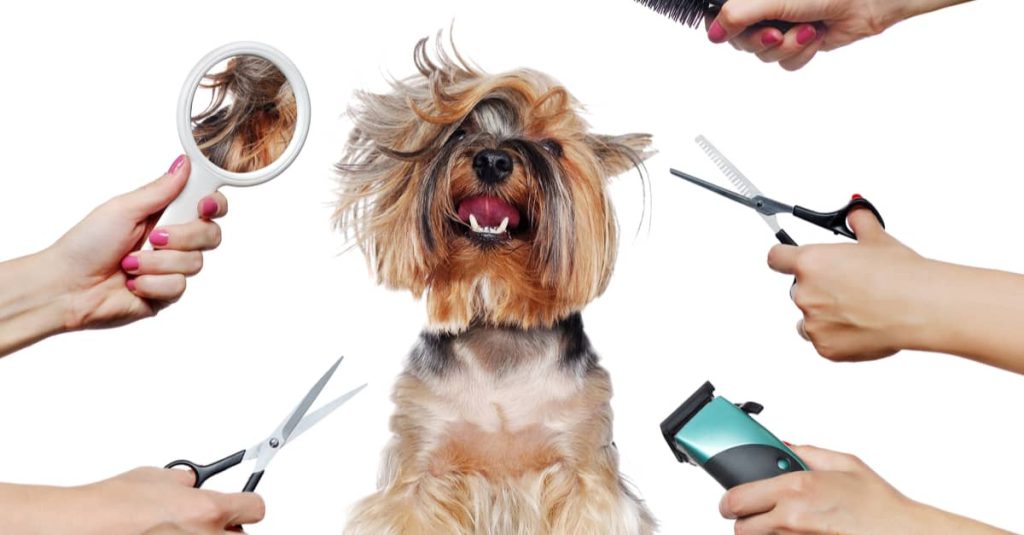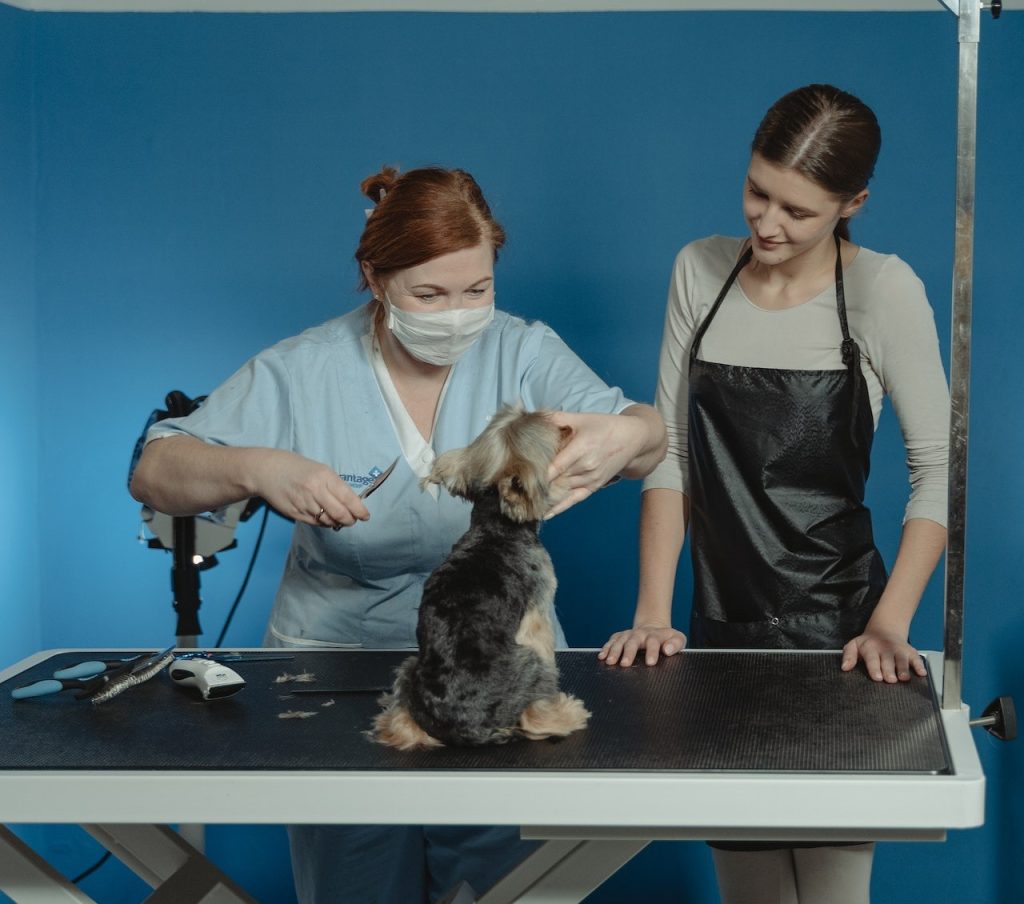Introduction
Welcome to the ultimate guide for dog owners who Must Love Dog Grooming! In this comprehensive article, we will delve into the essential aspects of dog grooming. As a responsible dog owner, you understand the significance of maintaining your furry companion’s cleanliness, health, and exquisite appearance. Regular grooming not only contributes to their overall well-being but also enhances their visual appeal. Our aim is to provide you with professional tips and expert advice to ensure a delightful grooming experience for both you and your cherished pet. So, let’s embark on this exciting journey together and discover the wonders of Dog Grooming!
Table of Contents
ToggleUnderstanding the Importance of Grooming for Dogs
Maintaining your dog’s health and happiness requires regular grooming. More than just keeping your dog in good shape is involved. Grooming frequently helps to:
Keep the coat clean and free from mats and tangles.
Prevent skin infections and irritations.
Control shedding and minimize allergies.
Promote healthy nail and paw care.
Maintain oral hygiene and prevent dental problems.
Detect any potential health issues early on.
Essential Tools for Dog Grooming

Before you embark on your grooming journey, it’s essential to have the right tools at hand. Here are some must-have grooming tools:
Dog shampoo and conditioner
Dog shampoo and conditioner are essential for maintaining your furry friend’s cleanliness and overall health. Specially formulated for dogs, shampoos remove dirt, oils, and odors. They come in different types, such as moisturizing, medicated, and flea/tick shampoos. Conditioners moisturize, detangle, and protect the coat. They often contain soothing ingredients like aloe vera or oatmeal. Using them after shampooing prevents dryness and adds shine. Choose products made specifically for dogs and follow instructions. Regular use promotes a healthy, lustrous coat. Ensure bath time is positive with warm water and gentle handling. Keep your pet looking and feeling their best!
Slicker brush and comb
Slicker brushes and combs are essential grooming tools for your pet’s coat.
A slicker brush has fine wires that remove tangles, mats, and loose hair. It stimulates the skin, promotes blood circulation, and leaves the coat smooth and shiny.Combs have different tooth spacing for various coat types. They help detangle, remove debris, and keep the fur neat.
Regular use of slicker brushes and combs keeps your pet’s coat healthy and well-groomed.
Nail clippers or grinders
Tools like nail clippers or grinders are crucial for keeping your pet’s nails healthy. While grinders use revolving files to gradually file down the nails, clippers employ sharp blades to trim the nails to the appropriate length. To prevent cutting the quick, which might result in bleeding, both techniques call for caution and attention. Overgrowth, pain, and potential harm are all avoided with regular nail care. Select the technique that works best for you and your pet to maintain well-trimmed and pleasant nails.
Ear cleaner and cotton balls
Dog toothbrush and toothpaste.
Dog toothpaste and brushes are essential for maintaining your pet’s dental health. Soft bristles and a form that fits a dog’s mouth are particular features of dog toothbrushes. It’s important to use dog toothpaste because human toothpaste can be toxic to canines. Plaque accumulation, tartar formation, and gum disease can all be avoided with regular brushing using a dog toothbrush and toothpaste. It’s crucial to develop a dental care routine early on and make sure that brushing your dog’s teeth is a pleasant experience for their general dental health.
Styling tools such as scissors or electric clippers
Styling tools like scissors and electric clippers are essential for grooming your pet’s fur. Scissors with rounded tips are used for trimming and shaping the coat, while electric clippers help with precision cutting and maintaining a consistent length. When using scissors, ensure caution to avoid accidental cuts. Electric clippers offer convenience and speed. Whether you prefer scissors or clippers, regular grooming sessions with these styling tools help keep your pet’s fur neat, tidy, and well-maintained, enhancing their overall appearance.
Step-by-Step Guide to Grooming Your Dog
Follow these steps to ensure a successful grooming session for your furry friend:
Bathing Your Dog
Start by preparing a warm bath and gently wetting your dog’s coat. Apply dog shampoo and massage it thoroughly into the fur, avoiding the eyes and ears. Rinse off the shampoo completely and apply conditioner if needed. Towel-dry your dog or use a blow dryer on low heat.
Brushing and De-Shedding
Regular brushing helps to remove loose hair, prevent matting, and distribute natural oils throughout the coat. Use a slicker brush or comb that suits your dog’s fur type.
Nail Trimming
Trim your dog’s nails carefully to avoid cutting the quick. If you’re unsure, seek guidance from a professional groomer or veterinarian. Consider using a nail grinder for a smooth finish.
Ear Cleaning
Check your dog’s ears for any signs of infection, redness, or discharge. Use an ear cleaner and cotton balls to gently clean the outer ear. Avoid inserting anything into the ear canal.
Dental Care
Brushing your dog’s teeth regularly is vital for their oral hygiene. Use a dog-specific toothbrush and toothpaste to remove plaque and prevent dental issues.
Styling and Haircuts
If your dog’s coat requires trimming or styling, consult a professional groomer for the best results. They will ensure your dog’s fur is cut in a manner that suits their breed and maintains their comfort.
Choosing the Right Products for Dog Grooming
It’s crucial to use the right grooming supplies to protect your dog’s health. When selecting grooming supplies, take into account the following:
Shampoos and Conditioners
Opt for dog-specific shampoos and conditioners that suit your dog’s coat type and address any specific skin conditions.
Brushes and Combs
Choose brushes and combs suitable for your dog’s coat length and texture. Bristle brushes, slicker brushes, and grooming combs are common options.
Nail Clippers and Grinders
Select nail clippers or grinders based on your comfort level and your dog’s nail size. Ensure they are specifically designed for dogs.
Ear Cleaners
Look for gentle ear cleaners formulated for dogs to maintain ear hygiene without causing irritation.
Toothbrushes and Toothpaste
Use toothbrushes and toothpaste specially designed for dogs to maintain their dental health effectively.
Styling Tools
If you plan to do some styling or trimming at home, invest in high-quality scissors or electric clippers designed for pet grooming.
Important Tips for Stress-Free Grooming Sessions
To make grooming a positive experience for your dog, follow these tips:
1. Start grooming your dog at an early age to familiarize them with the process.
It’s best to begin grooming your dog while they are young to get them used to the process and make it a routine activity. Early grooming helps your dog get used to being handled, brushed, and caressed in different ways. Additionally, it creates a favorable association with grooming, making it simpler and less demanding as they age. Early grooming practices are important for preserving a child’s hygiene, health, and general wellbeing. Therefore, begin grooming your dog at a young age to prepare them for a lifetime of satisfying grooming experiences.
2. Use positive reinforcement, treats, and praise during grooming sessions.
Using positive reinforcement strategies, like as rewards and praise, during grooming sessions is quite effective. By giving your dog treats and vocal praise for their cooperation and good conduct during grooming, you can help them associate the experience favorably. This makes your dog feel more at ease and relaxed while being groomed. Positive reinforcement promotes desirable behavior, eases fear, and deepens your relationship with your animal companion. So keep in mind to praise and spoil your pet during grooming to make the experience fun and rewarding for them.
3. Take breaks if your dog becomes anxious or stressed.
Take breaks if your dog starts to feel uncomfortable or anxious while being groomed. Pay attention to their body language and any indications that they’re uncomfortable, such as agitation, panting, or attempts to withdraw. Give your dog some time to unwind and settle down after the grooming procedure is over. It also lessens the possibility of overpowering or disturbing them further. This enables them to regain their composure. By giving your dog breaks during the grooming process, you may ensure their wellbeing and long-term development of a positive link with grooming.
4. Gradually introduce grooming tools to your dog to avoid fear or discomfort.
Introduce grooming equipment to your dog gradually to avoid any fear or discomfort. Allowing them to inspect the tools and smell them at first, while providing positive reinforcement like food and praise. Then, reward their calm behavior by softly touching their body with the tools without actually using them. Gradually advance to utilizing the tools on a tiny, less delicate region while remaining composed and comforting. This gradual approach makes it easier for your dog to get used to the tools and decreases the possibility of anxiety or discomfort, making grooming time more enjoyable for them.
5. Make grooming sessions short and enjoyable.
It is best to keep grooming sessions brief and entertaining to ensure that your dog has a positive grooming experience. Long grooming sessions can be intimidating and draining for your pet. Instead, divide the grooming activities into more manageable sessions and concentrate on one area at a time. Maintain a calm and peaceful environment while using praise, treats, and positive reinforcement all throughout the procedure. Making grooming enjoyable helps your dog associate grooming with positive things, which lowers stress and improves the experience for everyone involved.
Frequency of Dog Grooming
Depending on your dog’s breed, coat type, and degree of activity, you should groom him or her frequently. In general, compared to breeds with short hair, dogs with longer hair or double coats require more frequent maintenance. To maintain a healthy coat and general cleanliness, aim for frequent grooming treatments every 4-6 weeks.
Can We Groom Dogs Every Day?
Absolutely! A great way to keep your beloved buddy looking and feeling their best is to groom them every day. It not only supports a strong link between you and your dog but also aids in maintaining the cleanliness of their coat. Frequent brushing keeps their skin and fur in excellent shape by removing stray hair, preventing matting, and distributing natural oils. It also enables you to look for any skin irregularities or problems that might need to be addressed. Use grooming supplies and methods that are suited for your dog’s breed and coat type. Make grooming a daily habit to keep your pooch happy, healthy, and adorably cute!
Professional Dog Grooming Services

Consider bringing your dog to a respected dog grooming salon if you’d like to leave grooming to the pros.
Experienced groomers can handle various breeds with ease and knowledge, ensuring your dog gets the finest treatment possible.
Common Grooming Challenges and How to Overcome Them
Grooming may present certain challenges along the way. Here are some common issues and solutions:
Matting and Tangled Hair
Regular brushing and dematting tools can help prevent mats and tangles. For severe cases, consult a professional groomer.
Overgrown Nails
Trim your dog’s nails regularly or seek professional help if you’re uncomfortable doing it yourself. Long nails can cause discomfort and affect your dog’s mobility.
Ear Infections
Keep your dog’s ears clean and dry. If you notice any signs of infection, such as redness, odor, or discharge, consult a veterinarian.
Dental Issues
Brush your dog’s teeth regularly, and provide dental treats or toys designed to promote oral health. Schedule professional dental cleanings when necessary.
Skin Irritations and Allergies
Choose grooming products suitable for sensitive skin and address any underlying allergies or skin conditions with the guidance of a veterinarian.
Benefits of Regular Dog Grooming
Regular grooming offers several benefits for both you and your furry friend:
Promotes a healthy coat and skin.
Reduces shedding and allergens in your home.
Enhances the bond between you and your dog.
Allows for early detection of health issues.
Improves overall cleanliness and hygiene.
You can also read the Article about “Who Let the Dogs Out Grooming”
Conclusion
Grooming your dog is an essential aspect of responsible pet ownership. By following the tips and techniques outlined in this article, you can keep your furry friend looking fabulous and ensure their overall well-being. Remember to make grooming a positive and enjoyable experience for both you and your dog.
FAQs (Frequently Asked Questions)-Must Love Dog Grooming
Q1: How often should I bathe my dog? A1: The frequency of baths depends on your dog’s breed, activity level, and coat type. Generally, bathing once every 4-6 weeks is sufficient for most dogs.
Q2: Can I use human shampoo on my dog? A2: No, it is not recommended to use human shampoo on dogs. Human shampoos may contain ingredients that can be harsh and irritate a dog’s skin. Use dog-specific shampoos formulated for their needs.
Q3: Can I groom my dog at home, or should I visit a professional groomer? A3: It depends on your comfort level and your dog’s specific grooming needs. Basic grooming tasks like brushing and bathing can be done at home, but for more intricate styling or specialized breed cuts, professional groomers are recommended.
Q4: How can I make nail trimming less stressful for my dog? A4: Gradual desensitization and positive reinforcement techniques can help make nail trimming less stressful. Start by introducing your dog to the clippers or grinder gradually, rewarding them with treats and praise for calm behavior.Q5: Are there any grooming practices I should avoid? A5: Yes, it’s important to avoid using sharp or improper tools, pulling on mats forcefully, or causing any discomfort or pain to your dog during grooming. If you’re unsure, consult a professional groomer for guidance.

